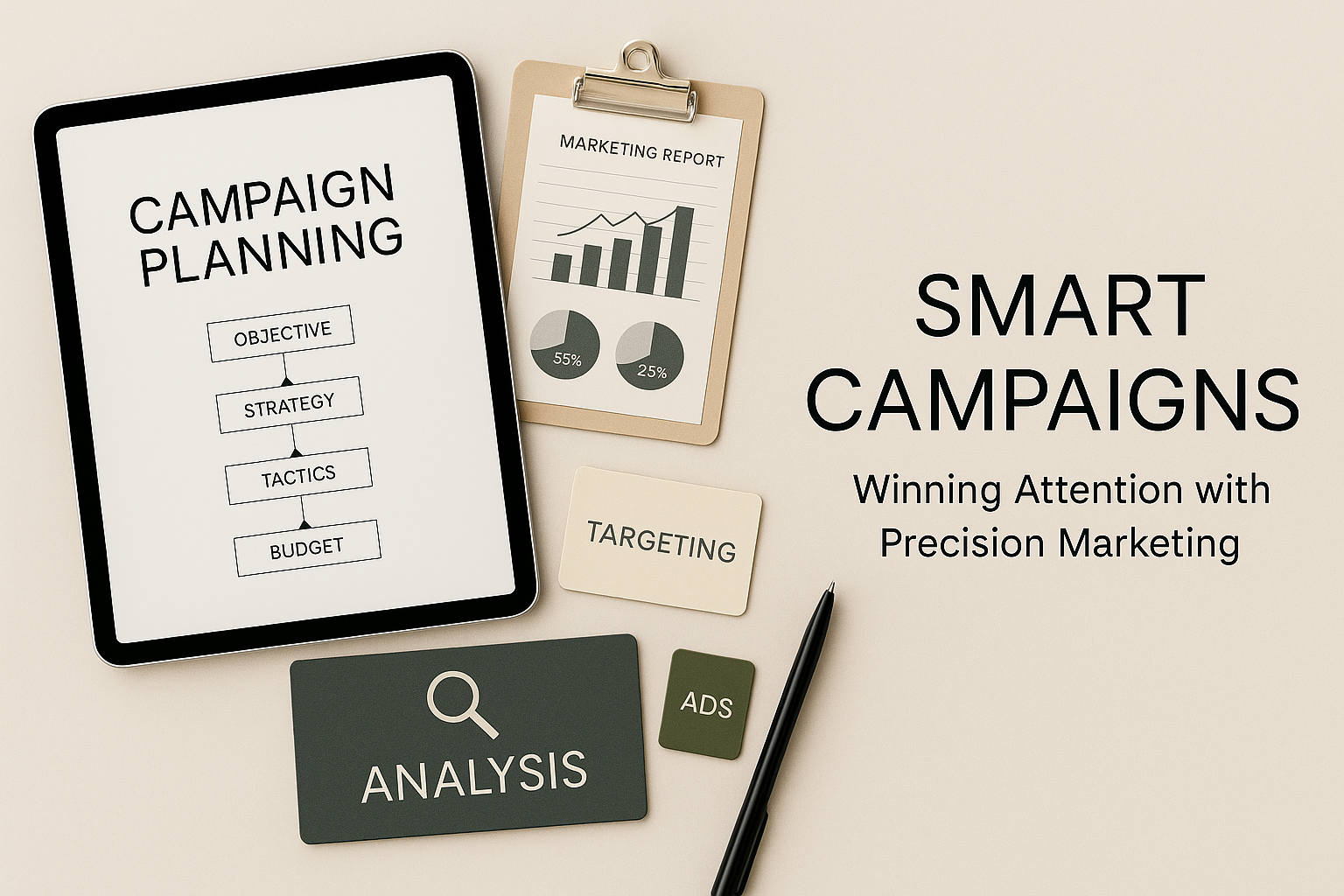Smart Campaigns
Winning Attention with Precision Marketing

Content Highlights
Overview Understanding the Campaign Challenge Audience Segmentation & Channel Planning Crafting the Campaign Strategy Creative Direction & Execution Performance Analysis & Optimization Frequently Asked QuestionsOverview
In an era where attention spans are shorter than ever, capturing interest is not enough — brands must connect instantly and convert strategically. This case study reveals how Brandube developed a high-converting campaign ecosystem for a tech-enabled service brand looking to scale quickly across multiple digital platforms. We combined precise targeting, dynamic creative execution, and agile optimization to drive real business outcomes from day one.
What started as a short-term awareness campaign evolved into a long-term acquisition engine, fueled by data, storytelling, and sharp messaging tailored to the modern consumer mindset.
Understanding the Campaign Challenge
The client had a great product and a loyal customer base but lacked a scalable way to consistently attract new leads. Previous ad efforts delivered weak results due to poor segmentation, misaligned messaging, and static creative that failed to convert. The goal wasn’t just better ads — it was building a smart campaign system that could learn, iterate, and grow in performance over time.
We needed to introduce the brand to new audiences, build trust rapidly, and guide users down the funnel — all while maintaining cost-efficiency and brand voice integrity.
Audience Segmentation & Channel Planning
Our campaign foundation began with research-driven segmentation. We developed detailed personas based on behavioral patterns, pain points, and aspirational drivers. Each persona had a mapped-out journey — from discovery to decision.
- Meta Ads: used for emotional storytelling and cold audience outreach
- Google Search & Shopping: for high-intent, product-aware prospects
- YouTube Shorts: for educational content and brand priming
- Email Retargeting: to re-engage drop-offs and drive conversions
This allowed us to serve the right message, to the right user, on the right platform — reducing waste and increasing relevancy across the board.
Crafting the Campaign Strategy
With channels selected and audiences defined, we built a tiered campaign structure. Top-funnel content focused on emotional value and social proof. Middle-funnel assets educated on features, benefits, and use-cases. Bottom-funnel touchpoints deployed urgency, offers, and testimonials.
We developed weekly sprints to launch, test, and rotate creatives — a system that allowed us to pivot based on engagement trends, ROAS signals, and conversion feedback. The messaging evolved dynamically as we learned what truly resonated at each funnel stage.
Creative Direction & Execution
Our visual strategy prioritized speed of understanding and emotional connection. Each ad had to hook within 3 seconds while conveying credibility and personality. Deliverables included:
- Testimonial-driven video ads
- Value-stack carousel formats for Meta & IG
- Dynamic search ads synced with seasonal trends
- Short-form video explainers for YouTube & TikTok
We followed a modular creative system — making it easy to scale messaging across formats without diluting clarity or consistency.
Performance Analysis & Optimization
In the first 30 days, the smart campaign ecosystem drove dramatic improvements in performance KPIs:
- 3.1x ROAS: across Meta ad sets
- 58% lower CPC: through audience-messaging match
- 2x conversion rate: vs. client's previous ad efforts
- Cost-per-lead: dropped by 64% within 6 weeks
But we didn’t stop at metrics. Weekly insights were turned into action — updating creatives, revising CTAs, and refining audience filters in real-time. The result? A marketing engine built not just for launch, but for long-term growth and learning.
Frequently Asked Questions
- What makes a campaign “smart”?
It’s not just about the platform — it’s about intentional targeting, message testing, and ongoing optimization. Smart campaigns are designed to learn and adapt over time. - How long does it take to launch a campaign like this?
Initial setup takes 2–3 weeks (research, creative, channel plan). Testing and optimization happen weekly after launch. - What kind of budget do you need?
We’ve successfully run campaigns with monthly media budgets from $1,000 to $50,000 — strategy scales with investment. - What channels perform best?
Meta and Google remain the core, but for younger audiences, YouTube Shorts and TikTok are highly effective. - How do you know when to scale?
Once cost per result stabilizes and ROAS is consistent across 2–3 audience groups, we begin increasing budget strategically.

